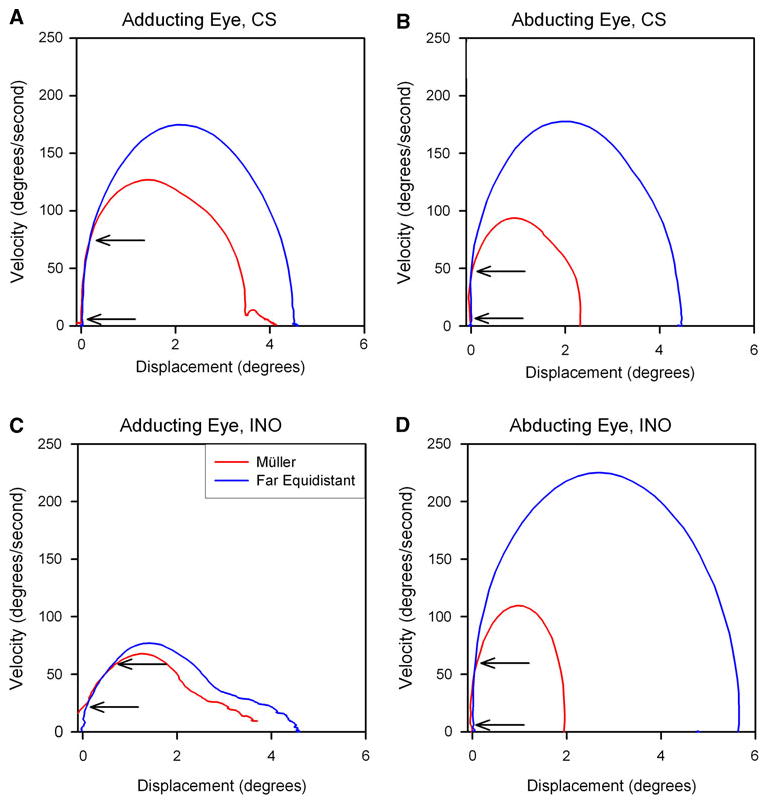Fig. 4.

Comparison of initial part of responses to jumps of a target on the tangent screen (far equidistant target, blue) or of a target aligned on the left eye (Müller paradigm–red) that required similar-sized movements. Responses are displayed as phase-plane plots and correspond to the time plots shown in Fig. 2. a The control subject (CS) makes a smaller, slower movement of both her adducting (a) and abducting (b) eyes during the Müller paradigm. A patient with INO makes a large, fast abducting movement between equidistant targets and a much smaller movement during the Müller paradigm (d). In contrast, his adducting eye shows little difference in size or speed for movements between equidistant targets of the Müller paradigm (c). Thus, the increase in the ratio of adducting/abducting peak eye velocity during the Müller paradigm (evident in Fig. 3) in this INO patient can be attributed to changes of his abducting, not adducting, saccades. Note that in each case, the initial portion of the phase plane is similar for eye movements under both test conditions (arrows); the possible significance of this is discussed in the text
